
Contact ProLine Radiant, or call us today, at 866-676-9276.

Contact ProLine Radiant, or call us today, at 866-676-9276.
Happy New Year!
Many of us welcome the new year with optimism and a fistful of ambitious resolutions, while others simply brush off the symbolism of the New Year and treat the upcoming days as they would any other. Still, the completion of another trip around the sun is celebrated by most. At the very least, the date allows us to track our growth, both personally and professionally, and inspires us to set new goals. Professional builders who are looking to cut through the clutter and take the next step toward building their business can use the new year as a virtual starting line, from where future successes can be measured.
For contractors who are looking for practical ways to build their business, ProLine checks all the boxes. In addition to providing wholesale discounts, ProLine offers premium quality snow melting and de-icing system components as well as complete system design and free installation training. ProLine’s quality products and unmatched support services make it easy, and profitable, for professional builders to add radiant heat installation to their list of services.
ProLine roof de-icing, pipe trace, and snow melting system components are among the best in their class. Contractors can be assured that in addition to receiving premium quality support services, ProLine system components are also among the most advanced, best-in-class components on the market. These components make ProLine snow melting systems fully automated, maintenance free, highly efficient, and reliable.
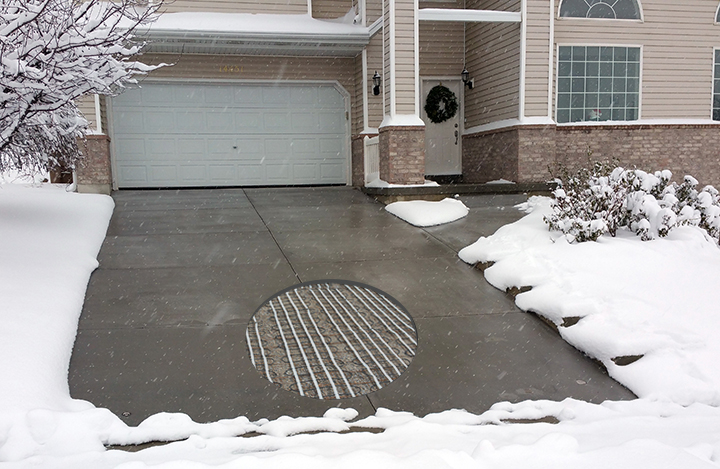
Radiant heat is the most efficient heating (and de-icing) technology available today; and ProLine’s advanced controllers ensure even more efficiency. In addition to radiant heat’s inherent characteristics, experienced system designers at ProLine design the systems so that they operate at peak efficiency. The high-tech activation devices / sensors can detect temperature as well as precipitation, so when certain weather conditions are present, the system automatically activates, warming the system to prevent any snow buildup. When the storm is over, the system remains on for a short time. This is called the “afterrun” function. This ensures that the driveway is dried so that ice doesn’t form over the driveway. This is a valuable safety feature.
Aerial-mount sensors and pavement-mount (in-ground) sensors are available. Customers have the option of installing either sensor, based on their preference. In-ground sensors are more commonly used for large, commercial applications. Aerial-mount sensors are typically used for heating residential driveways. The sensor is installed near the roofline, where it has unobstructed access to the elements, ensuring that it is exposed to the weather.
This WS-2C activation device features an adjustable setpoint, so when the temperature is below the setpoint (usually set at 39°F), and precipitation is detected, a signal is sent to the system’s contactor panel. The contactor panel is typically mounted on a wall in the garage. (Other types of activation devices are available for different types of applications, such as large commercial snow melting projects as well as custom roof de-icing applications.)
When the panel receives the signal, power is sent to the heat cable embedded in the driveway. This warms the surface and prevents snow from accumulating.
Different sensors are available to accommodate other types of snow melting and de-icing systems. The WS-5C is similar to the WS-2C aerial-mount sensor, but is designed for bigger heating loads, typically needed for commercial projects, such as large parking areas, loading docks, ramps and more.
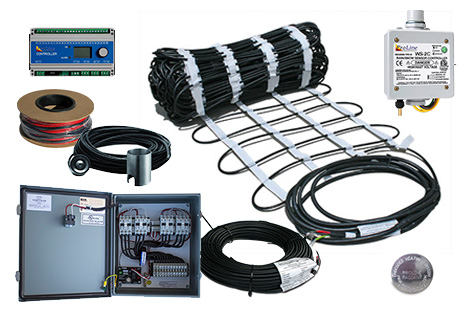
The WS-8C is another premier aerial-mount sensor, but is designed specifically for roof de-icing systems. The activation device can be used for roof gutters, downspouts, and small satellite antenna de-icing applications. The sealed, low voltage, remote-mount precipitation sensor head can be installed up to 10 feet away from the main controller, either in a downspout, gutter, or at the end of an antenna boom. This way, the main controller can be safely mounted in a more convenient location.
Additionally, ProLine’s wide range of contactor panels are available with and without GFEP. The panels are designed for electric and hydronic snow melting systems, with a variety available for all types of commercial and residential applications. The state-of-the-art contactor panels are pre-wired and UL listed, complete with a NEMA 4 weatherproof enclosure, wiring diagram, terminal connection block, and contactors.
Perhaps the most valuable asset provided to contractors from ProLine is its industry-leading customer support services. System professionals design the system and provide installers with the detailed AutoCAD. This layout includes the precise layout of the system components and materials, as well as the proper load calculations, breaker sizes, number of breakers, and electrical information for the electrician. These detailed layouts serve as the roadmap for installers, and help to simplify the installation.
A highly valued service is that of ProLine’s free installation training. The training can be completed online, via web conference, where the instructor personally covers every aspect of the installation. The installer can interact and ask questions at any time during the training, which includes installation photos, illustrations, and instructional video clips.
Technical support is also provided by ProLine radiant heat experts. If installers encounter any issues, or have questions during the installation, they can simply call and talk with ProLine’s installation experts.
What better way could there be to welcome the new year than by offering radiant snow melting system installations? Add to your bottom line this year by offering the increasingly popular technology to your clients. ProLine makes it easy! We not only back you up with the best service in the industry, but our proven systems include the best controllers and activation devices in the business. When you work with ProLine, you can be assured that you’re receiving the highest-quality products, backed by some of the industry’s most experienced support professionals.
For more information about radiant heat systems, support services, or system components, contact a friendly ProLine representative today, at 866-676-9276.
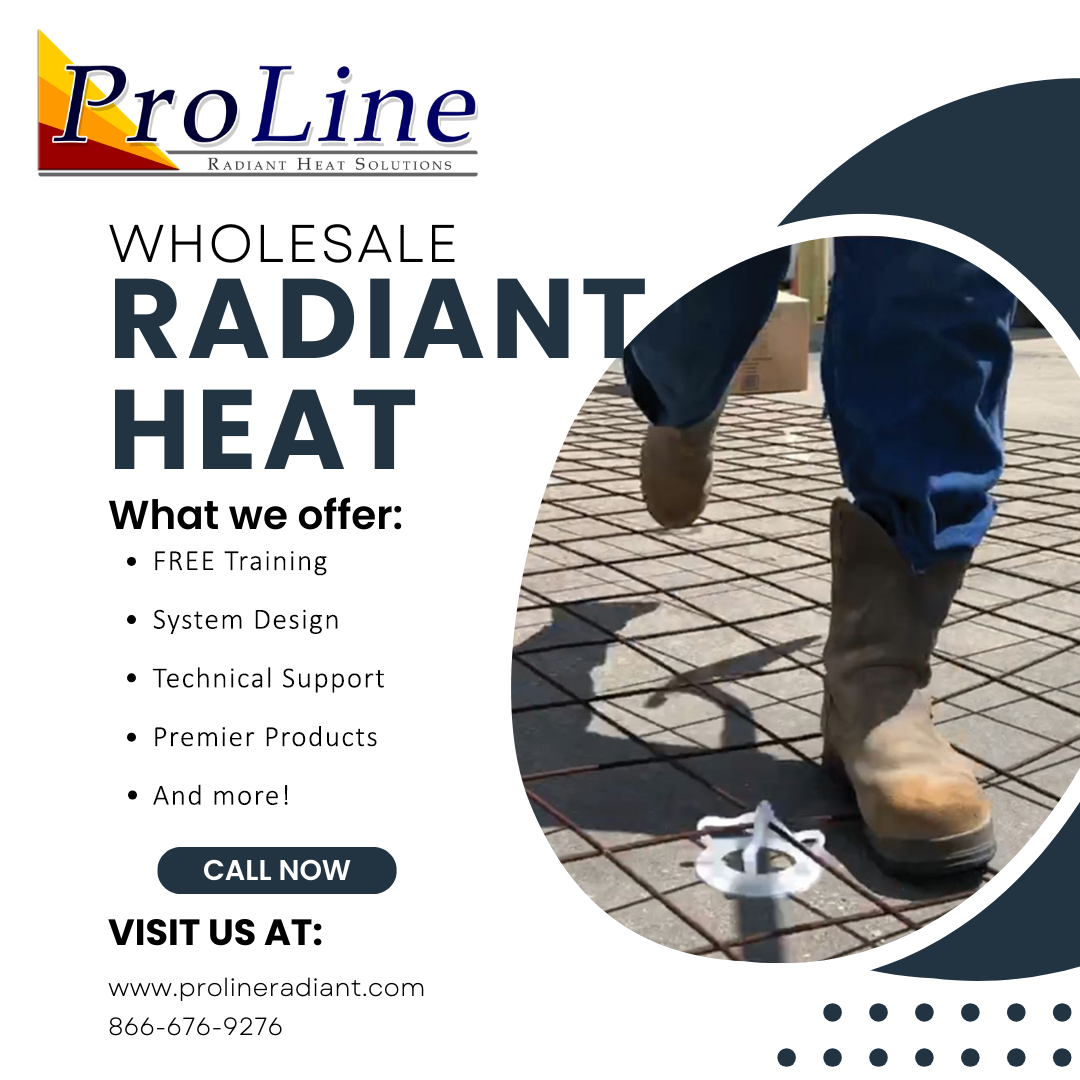
Contact ProLine Radiant, or call us today, at 866-676-9276.
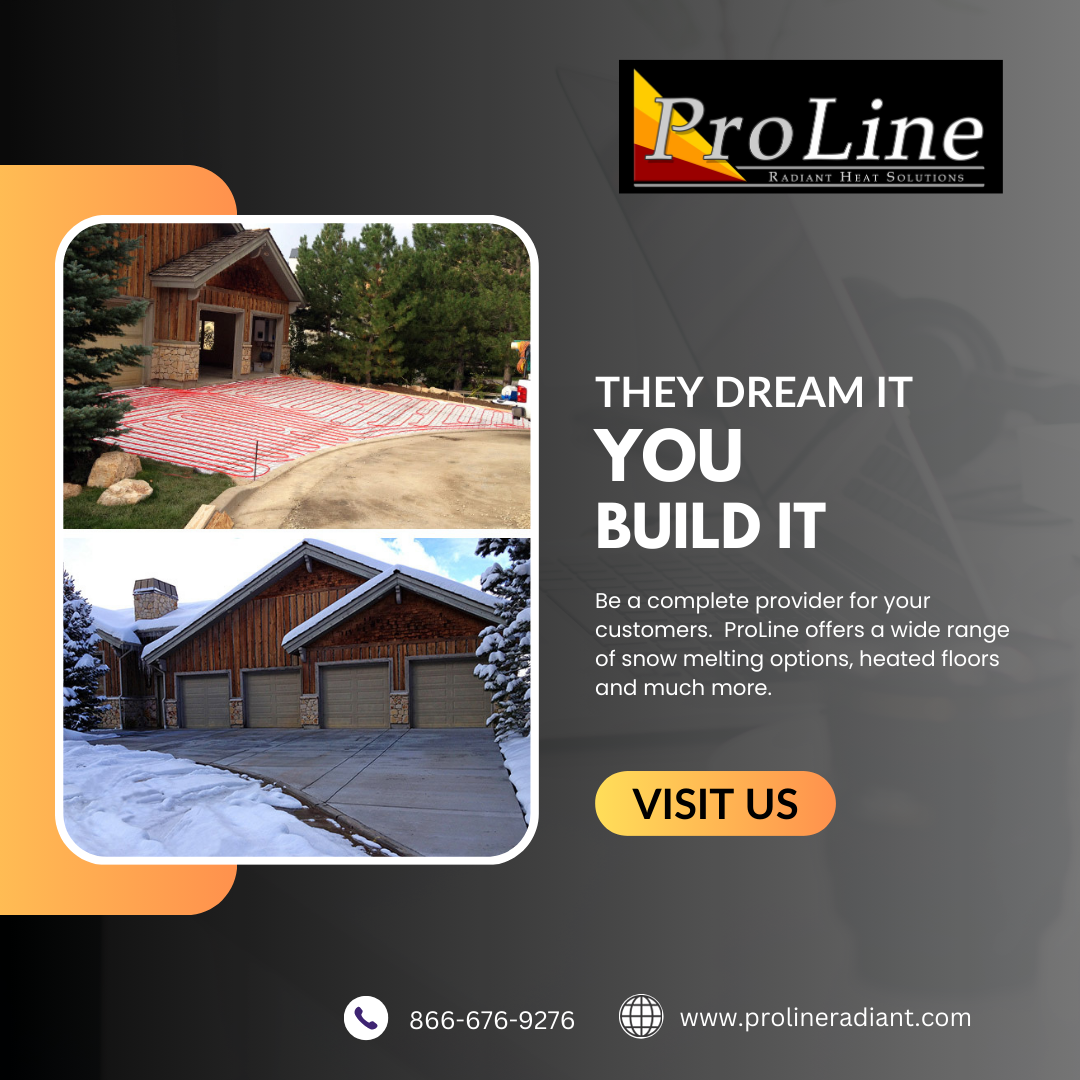
Contact ProLine Radiant, or call us today, at 866-676-9276.
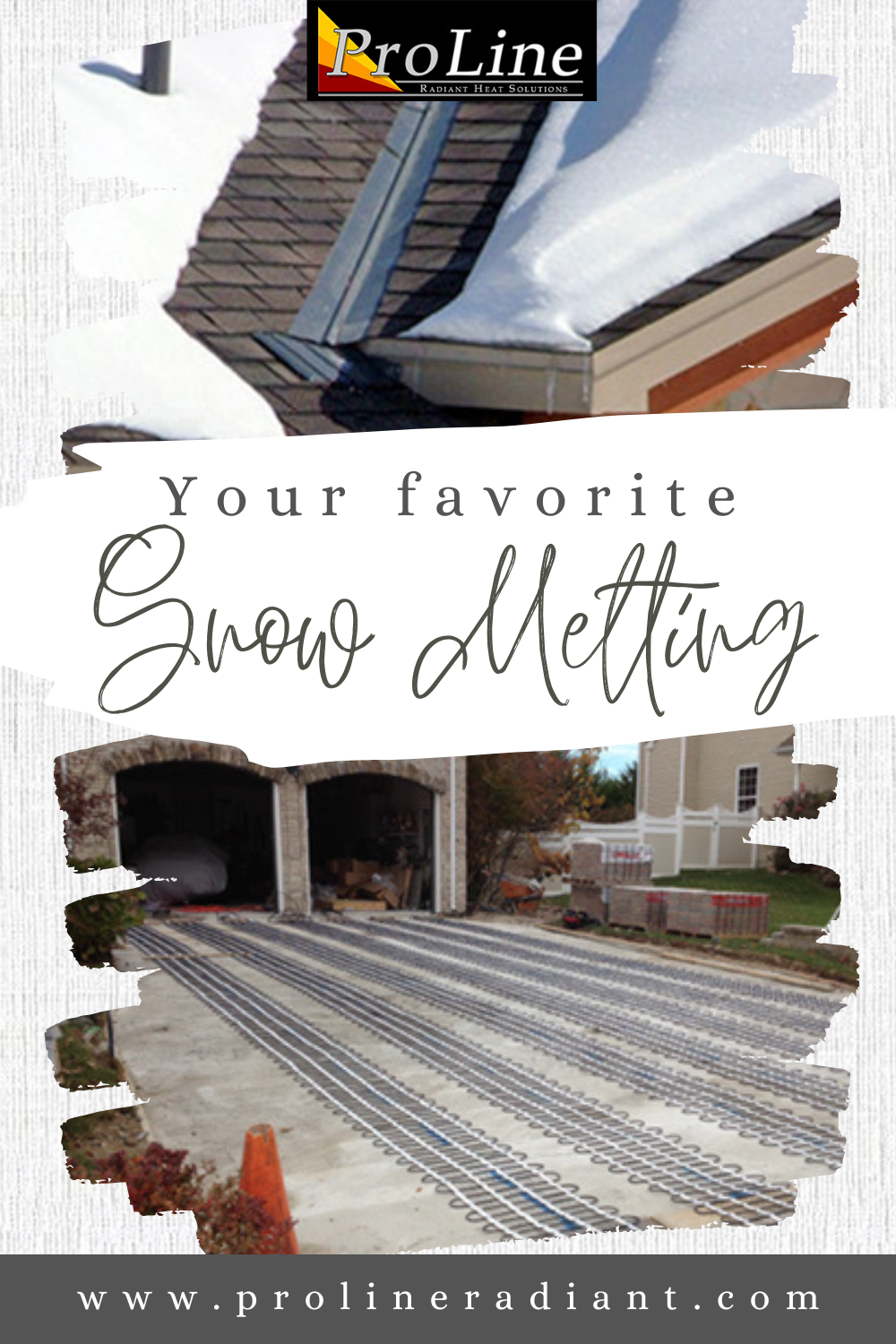
Contact ProLine Radiant, or call us today, at 866-676-9276.

Call ProLine Radiant today, at 866-676-9276.
What are the Options for Installing a Driveway Heating System?
When it comes to radiant heat installations, there are many custom options that are available to your customers. While many homeowners may express a desire to have a radiant heated driveway, many assume that the systems are financially out of reach, and leave it at that. Intimidated by the imagined cost, they abandon any thoughts of learning more about the systems; and instead, they upgrade their old plastic snow shovel with a new, poly blade shovel with double ergonomic grip.
What many potential customers don’t realize is that radiant snow melting systems can be easily customized to accommodate everything from performance and layout to the customers’ budget. Instead of being discouraged by the perceived cost of an automated snow melting system, homeowners can work with you (and ProLine), and be matched with the system that is ideal for their needs.
Radiant snow melting systems can be installed in all the common mediums, including concrete, asphalt, and pavers. (A heat cable with a special outer jacket is available for hot asphalt installations.) Existing driveways can even be retrofitted with a radiant heat system.
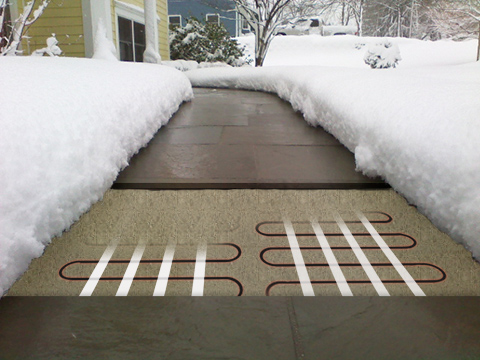
So, while homeowners dream about having an automated heated driveway, they don’t have to give up on that dream because of preconceived notions regarding cost. Driveway heating systems can be easily customized according to the customer’s budget needs.
Some of the general layout options for driveway heating systems are listed below:
Heat entire areas – Many homeowners prefer heating the entire driveway. Heat cable can be installed to keep driveways, sidewalks, steps, ramps and other outdoor areas completely free of snow and ice. Radiant snow melting systems can be tailored to meet the customer’s specific demands, and are designed to be installed in a wide variety of applications, including concrete, asphalt, and pavers.
Heat only the trafficked areas – Another popular option for homeowners is to install radiant heat only in the commonly trafficked areas. For example, rather than heating the entire driveway, two 24-inch-wide tire tracks can be installed, or an 8-foot strip in the middle of the driveway can be heated. Heated tire tracks are especially popular for homeowners looking to heat a long driveway, have power restrictions, or are looking to keep within a tight budget. These options can save customers installation costs as well as operational costs because less surface area is being heated.
Heat only small, select areas – Radiant heat systems are easy to customize, and can be installed to heat just about any layout. Small footpaths can be heated as well as odd shaped areas. Heating cable can be installed to heat disability ramps, outdoor steps, patios, sidewalks, and even dog kennels, dog runs, and more. The applications are virtually limitless. In addition to electric radiant heat systems, ProLine also offers customers hydronic radiant heat solutions.
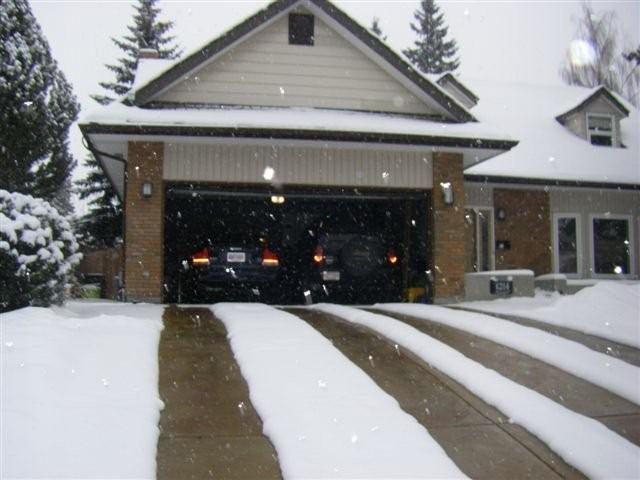
A great advantage of working with ProLine is that customers not only receive radiant heat solutions at wholesale prices, but that the systems are backed by preeminent customer support services. ProLine includes free installation training, professional system design, and technical support for installers.
These services have helped to establish ProLine as an industry leader, and resulted in so much repeat business from contractors and professional builders throughout the country. When contractors install ProLine radiant heat solutions, they know that they’ll receive dedicated, personal support throughout the installation process.
In addition to heated driveways and snow melting systems, ProLine also offers a variety of industry-leading roof de-icing, floor heating, and pipe trace products and solutions. For more information about ProLine’s radiant heat solutions and services, contact a radiant heat professional at 866-676-9276 today.

Contact ProLine Radiant, or call us today, at 866-676-9276.
When it comes to offering snow melting system installations, professional builders won’t find a better partner to work with than ProLine Radiant. ProLine carries the highest quality radiant snow melting systems for commercial and residential applications. In addition to receiving proven products with wholesale pricing discounts, contractors also benefit from ProLine’s industry-leading customer support services.
ProLine’s team of radiant heat experts provides a range of support services, including free installation training, complete system design and layout, and technical support during the installation. Having a team of experts on hand during the installation gives contractors peace of mind, and helps to ensure timely, hassle-free installations. The end result is another satisfied customer. Knowing that ProLine has your back, from start to finish, is crucial for contractors who are busy multitasking, and coordinating an assortment of current and future projects.
ProLine’s comprehensive support services allow professional builders to offer – and complete – more projects. Many ProLine customers are bolstering their bottom line by offering radiant heat installations to business owners and municipalities.
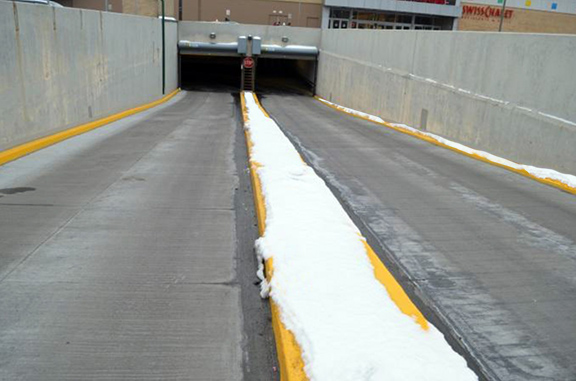
During the winter months, business owners face the challenge of keeping sidewalks, parking areas, and entryways safe for their customers. While it’s been common practice to hire snow removal services and task employees to salt and shovel the walks, keeping areas ice-free throughout the work day is never a given. Steps and walkways have to be continuously monitored, and employees must consistently step away from their typical daily responsibilities to maintain walkways and areas to ensure the safety of the customers.
For business owners, automated snow melting systems provide the ideal solution. The installation of an automated snowmelt system helps to ensure that steps, walkways, ramps, and other areas remain clear of snow and ice throughout the day and night. The systems are triggered by weather events; however, these fully automated systems can also be activated manually.
ProLine snow melting systems consist of premier heat cable that is available pre-spaced in mats or in individual lengths off the spool. The systems also feature activation devices that detect temperature as well as precipitation. These sensors can be mounted in the pavement, or near the roofline of any home or business structure. When the snow sensor detects moisture, and the temperature is below the adjustable set point (typically set at 38 F or 39 F), a signal is then sent to the controller, and then power is sent to the embedded heat cable (or other heating element). The area quickly begins to warm in order to prevent snow from building up.
Automated snow melting systems can be installed in a wide variety of applications and custom layouts. Systems are typically installed in concrete, asphalt, and under pavers. Areas can also be retrofitted with radiant heat.
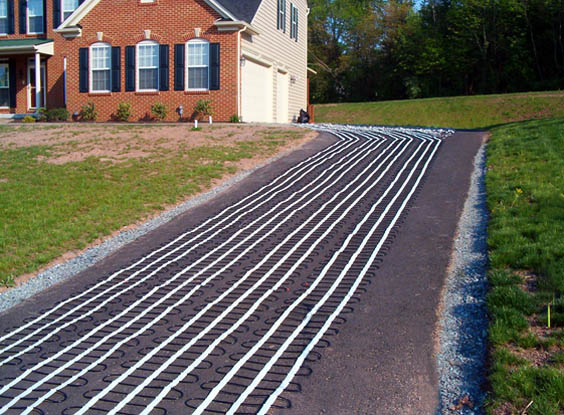
To heat asphalt, heating cable is laid out over the area to be warmed, and then a new layer of asphalt is then applied. To heat existing concrete, saw-cut technology is used. Small channels are cut into the concrete, and the heat cable is then placed in the channels. Once the cable is installed and wired, a topcoat of epoxy is applied to seal the embedded cable. Oftentimes, a sand broadcast is then sprinkled over the epoxy (prior to curing) to provide additional traction to increase the safety of the newly heating area.
ProLine snow melting systems are easy to customize, both in terms of layout and budget. If you have customers with unique layout issues, and/or a seemingly limited budget, ProLine system designers can work with you to provide the ideal snow melting solution. A variety of options are available. Call a radiant heat expert at ProLine today to learn more about how we can provide the ideal system for you and your customer(s).
ProLine Radiant is a leading wholesale provider of radiant heat solutions. For more information about radiant snow melting systems, roof de-icing and heat trace solutions, or floor heating systems, call a friendly ProLine representative today, at 866-676-9276.
ProLine Offers Wholesale Pricing and Unmatched Customer Services
Running a profitable business is about providing valuable services (and products) that help customers find convenient, helpful ways to improve their life or business. One way for construction professionals to do this is to ensure the upcoming winter season doesn’t catch them off guard. For business owners, winter snow and ice can lead to hazardous conditions that create liability issues and slow the flow of customers. With ProLine wholesale radiant heating products, winter can remain productive and profitable for everyone.
ProLine can help you offer residential and commercial customers innovative solutions to keep their businesses safe and clear this winter. The demand for radiant heat installation increases as the temperature decreases, making it the perfect choice for construction professionals to add to their repertoire.
A good place to start is with radiant heated driveways. Heating driveways is a popular choice for homeowners, and eases the pain and hassle of manual snow removal. ProLine’s versatile electric radiant heat cable can be used under almost any medium, including asphalt, concrete, and pavers. Electric radiant heating cable is rugged and reliable, delivering years of peak performance. The cable is available in individual lengths, as well as pre-spaced in mats that can be rolled out for easy installation.
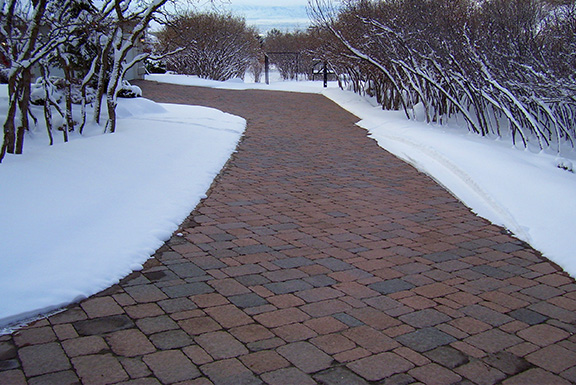
Snow melting systems can be customized for virtually any application. Radiant heat is ideal for installation in residential driveways or large commercial applications. Radiant heat can be installed to heat driveways, ramps, parking areas, sidewalks, and even steps. Heated steps are particularly important to keep clear of snow and ice during the winter months. Needless to say, providing safe access to one’s business or home is vital. Keeping steps, walkways, and parking areas clear with Proline radiant heat cable is the surest way to keep customers and employees safe throughout the winter season.
Radiant heating systems can be easily customized to meet one’s budget and snow melting needs. If heating an entire area doesn’t meet your customers’ needs, ProLine’s customer service experts can design a custom solution that best suits their needs. For driveways, check out these great options:
Heat a center strip: Customers who may not want to heat an entire area can simply heat the center strip. Instead of heating the entire surface area, some homeowners opt to heat an 8-10 feet wide strip. This option is perfect for specific areas that see higher amounts of traffic and makes sense for a lot of homeowners.
Heat two tire tracks: Customers often use theProLine heating mats to heat two 24-inch-wide tire tracks. The heating cable is pre-spaced in the mats, which are conveniently laid out, making installation quick and easy. Heating only two tire tracks also requires less power than a system heating the entire driveway, making this an excellent solution for homeowners on a tight budget.
Specific areas: Use ProLine’s state-of-the-art mats or cable to heat troublesome areas anywhere around a business or a home. Heat cable can be installed in just about any area. Heating steps, heavily shaded areas, or driveway inclines can be the ideal solution for many.
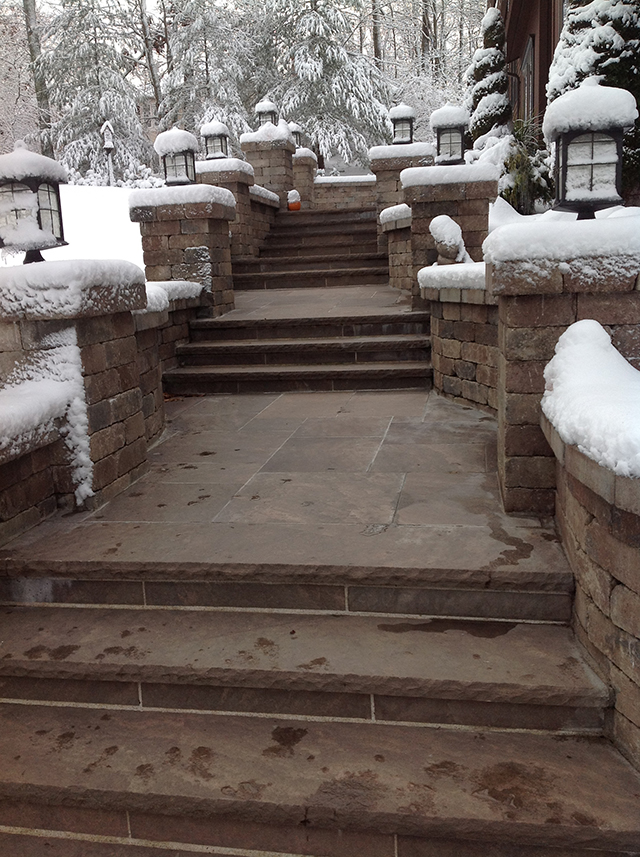
Roof de-icing is another solution to help customers prevent any costly repairs associated with water damage from a leaking roof. ProLine can help prevent heavy ice and snow from destroying roofs and causing property damage. Snow and ice buildup can create ice dams along roof edges. Ice dams prevent roof drainage and cause seepage that can lead to mold and mildew inside. One solution is to install heating cable.
Self-regulating heat cable features an irradiated conductive core with a rugged outer jacket to protect it from water and alkaline damage. The self-regulating heat cable is easily placed along roof edges, eaves, or trouble spots to provide channels for the runoff, and prevent ice dams from forming.
Freezing temperatures can also lead to broken pipes and expensive water damage that can take months to repair. Using pipe trace cable from ProLine can prevent these hazards. Pipe trace cable is the most effective option for any outdoor pipes. Commercial and industrial customers benefit from installing heat trace cable.
While ProLine’s variety of products ensures peak performance, what really sets ProLine apart is its comprehensive customer support services. ProLine is unlike other wholesalers on the market. These services allow contractors to focus on their business. No more worrying about hunting down products you need or wondering if they will get delivered on time. ProLine has resources and vast warehouse facilities that manufacture and house their products. We know that your time is especially valuable in the winter season and work hard to ensure our supply meets demand without frustrating delays.
ProLine’s comprehensive customer service starts with system design professionals. They know the products inside and out and work hard to meet every customer’s needs and expectations. Once the design professional has all the information, they can start on a custom-designed system. Every system comes with a detailed layout of the system, as well as all technical information needed for installation. The information includes materials, system performance expectations, number of breakers, breaker sizes, and proper load calculations. This layout allows installers to quickly and efficiently install any system.
Installation training is also free with ProLine. The training is provided via video conference with an instructor who will cover all aspects of installation and spend time with you to answer any questions. After installation training, installers have access to ProLine’s dedicated support professionals. They are available to help answer questions or help resolve any problems that may arise during the process of installation. An online library of photos and illustrations, product documentation, and instructional videos is also available anytime. No matter what your needs are, ProLine is there from start to finish. That why ProLine is a favorite among building professionals.
If you have questions, call and speak to a professional at ProLine today at 866-676-9276.